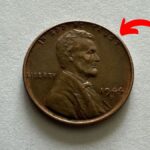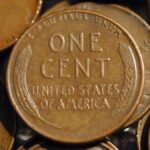The Lincoln Wheat Penny Valued at $69 Million: The world of rare coins represents a fascinating intersection of history, artistry, and investment. With some specimens commanding prices in the millions of dollars, these small pieces of metal tell stories of national heritage, artistic achievement, and economic evolution. Today, the most prestigious coins in numismatics collectively represent a staggering value of $69 million, showcasing the extraordinary worth that collectors and investors place on these historical treasures.
The Crown Jewel: The 1794 Flowing Hair Dollar
At the pinnacle of numismatic excellence stands the 1794 Flowing Hair Dollar, a coin that perfectly embodies the birth of American currency. As the first silver dollar minted by the United States, this coin holds unparalleled historical significance. In 2013, one exceptional specimen achieved a world record when it sold for an astounding $13.28 million. The coin’s pristine condition and its role in American monetary history made it an irresistible prize for serious collectors.
The Legendary 1933 Double Eagle
The 1933 Double Eagle tells a compelling story of American financial policy during the Great Depression. Despite a substantial mintage of 445,500 pieces, these coins were never legally released to the public due to President Franklin D. Roosevelt’s Executive Order 6102, known as the Gold Reserve Act. Most specimens were melted down, making the few surviving pieces extraordinarily valuable. The sale of one specimen for $7.59 million in 2002 demonstrates the immense value placed on these forbidden treasures.
The Brasher Doubloon: A Colonial Masterpiece
The 1787 Brasher Doubloon represents a unique chapter in American numismatic history. Crafted by renowned silversmith Ephraim Brasher, these privately minted gold coins showcase the ingenuity and craftsmanship of early American artisans. The 2021 sale of a Brasher Doubloon for $9.36 million highlighted the enduring appeal of these colonial-era masterpieces. Each surviving specimen serves as a tangible link to America’s founding period.
Saint-Gaudens Double Eagle: The Height of Artistic Achievement
The 1907 Saint-Gaudens Double Eagle stands as a testament to the marriage of art and currency. Designed by acclaimed sculptor Augustus Saint-Gaudens at President Theodore Roosevelt’s request, this $20 gold piece exemplifies the pinnacle of American coin design. The ultra-high-relief versions, particularly rare and striking, command prices upward of $7.2 million. Their artistic merit and limited availability make them highly sought after by discriminating collectors.
The Medieval Marvel: Edward III Florin
Dating back to 1343, the Edward III Florin, or “Double Leopard,” represents one of the oldest and rarest coins among the world’s most valuable. With only three known specimens in existence, this medieval masterpiece provides a glimpse into the sophisticated monetary system of medieval England. A private sale of $6.8 million for one example demonstrates the tremendous value placed on coins of such extreme rarity and historical significance.
The Mysterious Liberty Head Nickel
The 1913 Liberty Head Nickel, with only five known specimens, exemplifies how rarity and mystery can combine to create numismatic legend. These coins, whose very existence remains somewhat controversial, have captured collectors’ imaginations for generations. Their value, estimated at around $5 million each, reflects both their extreme scarcity and the fascinating story of their creation.
Understanding Coin Valuation
The extraordinary values achieved by these coins result from a complex interplay of factors. Rarity stands as the primary driver of value, but condition plays an equally crucial role. Coins preserved in mint state, showing minimal wear and original luster, command the highest prices. Historical significance adds another layer of value, particularly for coins that represent important moments in monetary or national history.
The Role of Minting Errors
Paradoxically, mistakes in the minting process can dramatically increase a coin’s value. Double strikes, off-center impressions, and missing details create unique specimens that attract specialized collectors. These errors, when combined with historical significance or rarity, can result in astronomical valuations.
Professional Grading and Authentication
In the world of high-value coins, professional grading services play a crucial role. Organizations like PCGS (Professional Coin Grading Service) and NGC (Numismatic Guaranty Corporation) provide standardized assessments of a coin’s condition and authenticity. Their evaluations often directly influence market values, with the highest grades commanding significant premiums.
Investment Considerations
While these coins represent the pinnacle of numismatic collecting, they also serve as investment vehicles for wealthy collectors. Their values have generally appreciated over time, often outperforming traditional investments. However, the market for ultra-rare coins requires extensive knowledge, careful authentication, and substantial capital.
Cultural and Historical Significance
Beyond their monetary value, these coins serve as tangible connections to history. They reflect the economic policies, artistic achievements, and technological capabilities of their eras. Each coin tells a story about the society that created it, from medieval England to the early American republic to the modern United States.
Conclusion
The world’s most valuable coins represent more than just currency or collectibles. They are historical artifacts that combine artistic beauty, technical achievement, and cultural significance. Whether valued at thousands or millions, these numismatic treasures continue to captivate collectors and historians alike. Their stories remind us that sometimes, the most valuable things come in the smallest packages, preserved through centuries to tell their tales to future generations.



